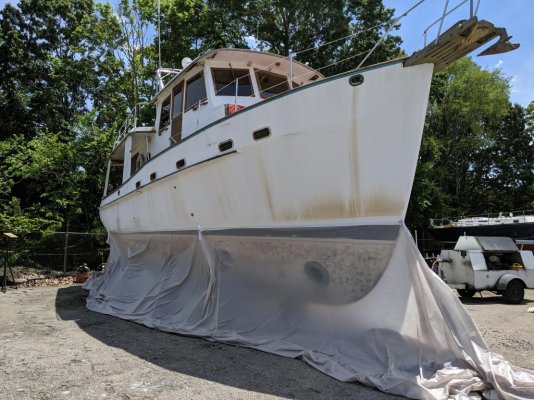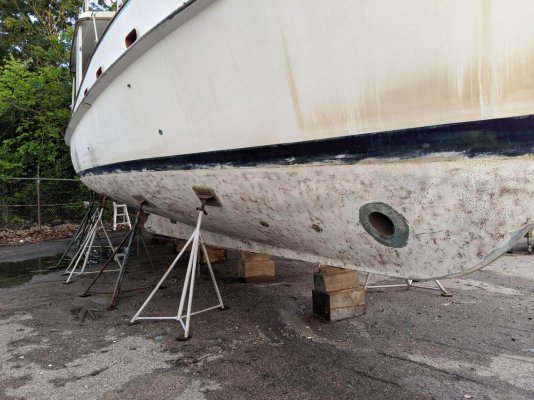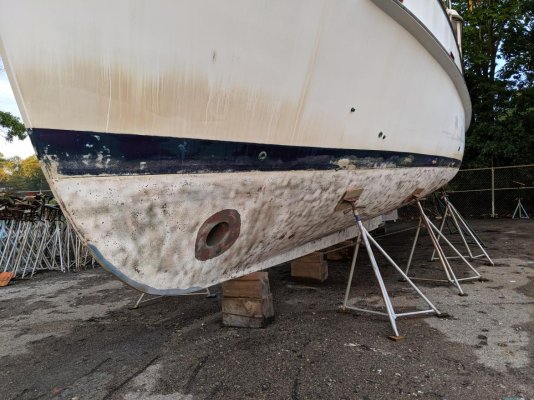Agreed, reams of disinformation and misinformation where osmotic blistering is concerned. The USCG commissioned a detailed study by Doctors Thomas Rockett and Vincent Rose, Phd's both, of the Univ of Rhode Island...
in 1987, it answered virtually every question there was about what causes osmosis, as well as how to prevent it. And yet, the marine industry keeps trying to reinvent this wheel. The hot tub industry dealt with these issues long before we did, and they too figured it out.
In short, boats don't usually sink form osmotic blisters, but depending on their size and number, blisters can weaken a laminate's structure, which could be relevant in the event of a grounding or other stress.
There are two approaches, one, grind, fill and fair blisters, than apply an epoxy barrier/primer coat (the value of barrier coating a "wet" laminate is debatable, but you do need a primer, the only difference between Interprotect 2000 as a barrier vs. a primer is the coat thickness), and bottom paint, this is purely cosmetic, and will not prevent future blisters from occurring, which may be an issue when the vessel is sold. It will typically cost $3,000-$5,000, depending on the size of the vessel, yard location, time of year etc.
Two, patch test the vessel's bottom to determine the depth of affected laminate, peel the affected laminate off, re-laminate with vinyl-ester resin, fair, apply epoxy primer and bottom paint. If done correctly this is a permanent fix, blisters will not re-occur. The cost is $10,000-$20,000 depending on the size of the vessel, yard location, time of year etc. There aren't many yards who have the skill level to do this, and this repair should come with a 10 year warranty.
There is no such thing as drying a "wet" bottom, please don't allow anyone to do this, it is a waste of time and money.
For a full discussion on the subject, see Part I
http://stevedmarineconsulting.com/wp-content/uploads/2014/03/Blistology-Pt-1-PMM-Jul_Aug-06.pdf and Part II
https://stevedmarineconsulting.com/wp-content/uploads/2014/03/Blistology-Pt-2-PMM-Jul_Aug-06.pdf





